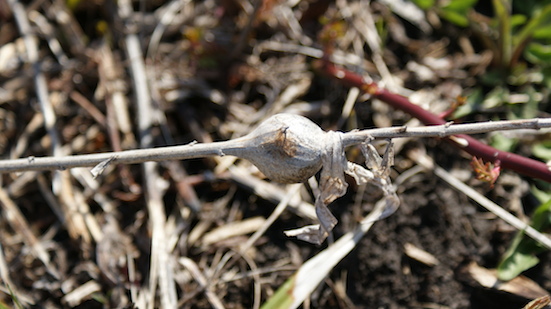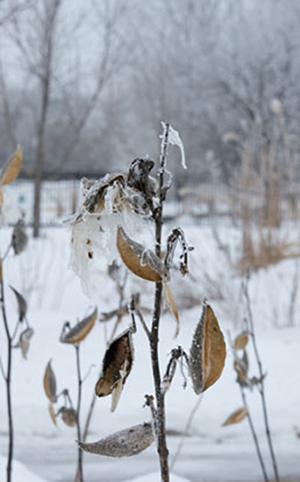Saving living space for living
things one yard at a time
Leave Plants Standing
A question Citizens for Conservation frequently receives from native plant and other gardeners involves the best time to cut down dormant plants to neaten the garden. The answer is “Not now!” There are several very good reasons for allowing plants to stand through the winter months.
The most obvious reason is that dormant plants provide shelter for the wildlife spending winter in this cold, wet, and windy climate. Notice the birds huddled in the tall plants on a brisk day.
Secondly, many of the native plants provide seeds that nourish birds and other critters during the winter months. Finches in particular favor the native seeds. Prairie gardens rustle with finch activity when seeds are available. Chickadees love the tiny seeds of Monarda and Echinacea. Oilers are nice, but the birds prefer seeds from native species.
Finally, the stems of many plants provide winter shelter for beneficial native insects. This is particularly true of hollow-stemmed plant species. Often the insect over-winters as an egg or a larva, protected from the elements within the plant stem and exiting the stalk in warmer spring weather. You’ve all seen the galls on goldenrod formed when a female fly lays her egg in the stem; the young fly remains inside that stem for a full year. Joe Pye weed, angelica, and various reeds are hollow-stemmed plants that can provide winter shelter for native insects which eventually nourish nestlings.

Goldenrod gall

Goldenrod gall

